6 best practices for UI card design
Sharing best practices to improve their visual appeal, effectiveness, and accessibility.


01 Structured Information!
Card layouts provide a structured approach to presenting information, enabling users to quickly scan and digest content.
Example: Creating a card-based interface for a news website, where each card represents a news article with a headline, summary, and relevant imagery, allowing users to easily browse through the latest updates.
02 Visual Hierarchy & Cognition
Well-designed card layouts utilize visual cues, such as size, color, and placement, to establish a clear hierarchy of information, facilitating cognitive processing.
Example: Using larger cards with bold colors to highlight important or featured products on an e-commerce platform, attracting users’ attention and guiding their decision-making process.
03 Content Organization & Flexibility
Card-based designs offer flexibility in organizing various types of content, providing a cohesive and visually appealing interface.
Example: Employing cards to showcase different categories of recipes in a cooking app, allowing users to navigate through various cuisines or dietary preferences effortlessly.
04 Enhancing User Engagement
Card layouts can captivate users and encourage interaction, leading to increased engagement and time spent on a website or application.
Example: Implementing interactive cards in a social media platform, where users can like, comment, and share posts directly from the card view, fostering active participation and social interaction.
05 Responsive & Mobile-Friendly
It can be inherently lend themselves to responsive design, ensuring seamless experiences across different devices and screen sizes.
Example: Adapting a card-based interface for a travel booking app to provide optimal user experiences on both smartphones and tablets, delivering consistent functionality and aesthetics.
06 Brand Consistency & Visual Delight
Mastery of card layout allows designers to align the design with the brand’s identity, creating a visually consistent and delightful experience.
Example: Incorporating a unique card shape, color scheme, and typography that reflects a brand’s personality in a fashion e-commerce app, establishing a recognizable and memorable brand presence.
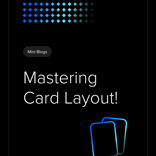
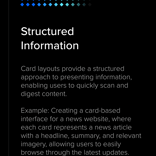
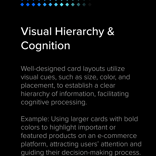
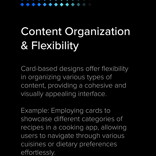
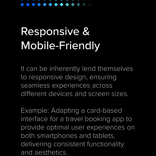
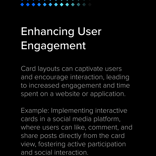
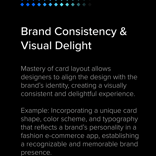
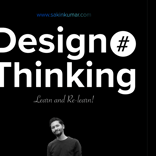
Image carousels

